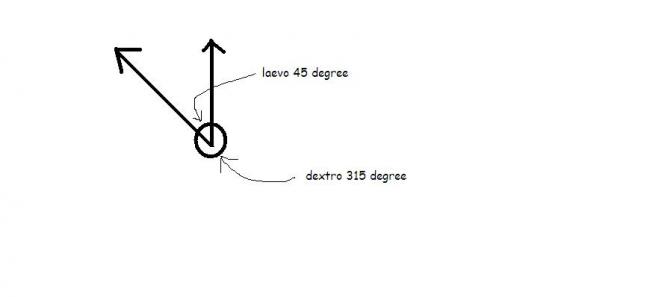brilliant explanation !!
A sample of a pure liquid in a 10 cm tube is placed in a polarimeter and a reading of +45° is made... How could u establish that [α] is +45° and not -315° ? or how would u establish that [α] is +45° and not +415° or for that matter +765°?
-
UP 0 DOWN 0 0 16

16 Answers
and yea for that matter take density of pure liquid to be 1 g/ml.
PLEASE HELP IT IS URGENT!
that's what makes these isomers dextro and laevo !! u can either go right (clockwise) or left (anticlockwise)
yeah look,
Dextrorotary designated as (+), clockwise rotation (to the right)
Levorotary designated as (-), anti-clockwise rotation (to the left)
if the compound is dextro, plane polarized rlight will be rotated to the right in the polarimetry instrument, and so its plus. if its rotated to left, then minuis
and ok, it doesnt make sense to have 415 or anythign like tat, coz go back to ur definition of alpha. its "The amount of rotation is quantified as the number of degrees that the analysing lens must be rotated by so that it appears as if no dimming, of the light has occurred. "....as soon as it reaches tat angle first, ur done. tat is alpha. so imagine rotating the instrument until the light aligns. it will be less than 360. and yes if it aligns at 45, it will also align at all those angles too..but "alpha" is the first angle from 0 at which it aligns.
"it will be less than 360" ... but that is the doubt isn't it?
then can we write - 45° as +315°?
noo u cant! coz look, i said, POS. AND NEG SIGNS mean more than just the mathematical meaning..IT also defines the NATURE OF THE ENENTIOMER.
a negative means its of the levo kind and positive means its of dextro kind...so no u write it like that.
and think of the polarimetry instrument. u place the compound and u look thru it at 0 degrees. u will find almost no light coming thru. now u rotate a knob until light comes thru unhindered. if u have to turn knob to right, its positive, so dextro. if u r having to turn knob to left for light to come thru, then negative, means u hve a levo compound
315 degrees D is different from 45 degrees L.
U will consider that path which the compound will take to rotate the polarimeter.....not any angle of your own.......no compound is so stupid to go turning on and on.....it'll either rotate clockwise or anticlockwise.
ummm..i am seeing it in point of view of a physicist....
so an anticlockwise rotation is called laevo and a clockwise rotation is called a dextro...
now let us look into a ray of polarised light vibrating in Y direction...let it rotate in laevo direction on passing thru the optically active substance...so i conclude like this.....

so now where was i wrong?
look it is all a game of measurement how i measure by rotating the instrument towards right or left...in such case it depends upon the experimenter wether he will name the compound dextro or laevo isn't it??
abs. value of alpha less than 180..less than or equal to
13 replies doesn't look good......13's unlucky for me............so typed this to make the no. of replies 14.................. :-)